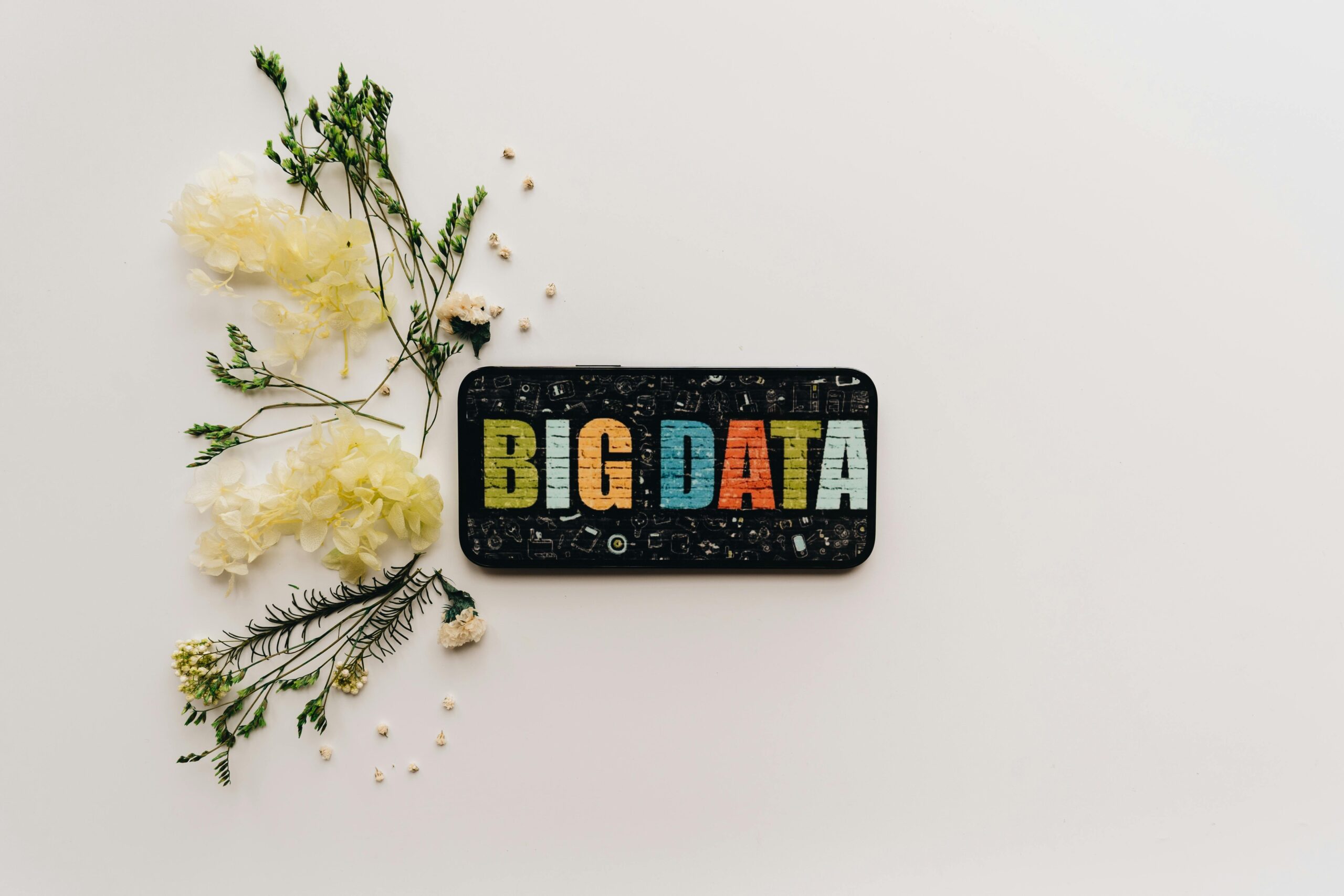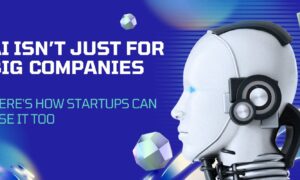How Do Businesses Utilize Predictive Analytics Through Big Data?
In an era where data is king, businesses are turning to predictive analytics to stay ahead of the curve. This article dives into how companies leverage big data to make informed decisions, featuring insights from industry experts. Discover the transformative strategies that are shaping the future of business efficiency and success.
- Optimize Workforce Planning and Efficiency
- Enhance System Reliability and Reduce Costs
- Improve Client Retention Through Engagement
- Transform Forecasting and Planning with Data
- Empower HR Decisions with AI Insights
- Predict Future Expenditures for Better Management
- Prioritize Accounts for Better Debt Collection
- Anticipate Client Needs Through Support Tickets
- Predict SEO Content Performance with FALCON AI
- Enhance Email Campaigns with Predictive Analytics
- Forecast Hiring Needs with Data-Driven Dashboard
- Predict Demand for Seasonal Collections
- Optimize Resource Allocation with NetSuite
- Anticipate Future Hiring Needs with Big Data
- Enhance Facilities Management with Predictive Analytics
- Analyze User Behavior for E-Sports Events
- Optimize Operations and Decision-Making
- Transform Manufacturing with Predictive Analytics
Optimize Workforce Planning and Efficiency
Our business leverages predictive analytics through Big Data to optimize workforce planning and improve operational efficiency. By analyzing the success rates of key milestones in our processes, we can accurately forecast the workforce required for each stage. Additionally, we use data on the time taken to start and complete milestones to refine process timelines, enabling us to identify bottlenecks and implement adjustments that enhance overall efficiency.
This data-driven approach has allowed us to allocate resources more effectively, reduce delays, and achieve greater productivity in our workflows. The insights gained from predictive analytics have significantly improved our ability to forecast needs and proactively address challenges before they arise.
Eric Tribble, Data Analyst
Enhance System Reliability and Reduce Costs
Predictive analytics has significantly enhanced system reliability and reduced operational costs for both our team and our clients. By utilizing Big Data, our team helps to monitor and optimize critical infrastructure, such as water supply and distribution systems, and wastewater treatment plants. Analyzing both real-time and historical data allows us to uncover patterns that predict chemical imbalances, equipment malfunctions, and inefficiencies before they occur.
For example, we developed a predictive model that detected anomalies related to water quality at distribution testing sites, enabling the utility to take proactive measures to maintain water quality and prevent issues from escalating. This approach has greatly improved forecasting accuracy, facilitating better planning, more efficient resource allocation, and streamlined operations.
Manal Alduraibi, Big Data Team Lead, Ardurra Group, Inc.
Improve Client Retention Through Engagement
For us, our most valuable predictive insight came from analyzing client churn patterns in reverse. Instead of studying why clients leave, we tracked behavioral patterns of clients who stayed longest. By analyzing three years of client interaction data, we discovered that clients who asked the most questions during their first 30 days became our longest-term partnerships.
We rebuilt our onboarding process around this insight, creating specific engagement triggers to encourage questions early. When new clients didn’t reach our “question threshold,” we proactively scheduled additional consultation calls. One healthcare client who initially seemed high-risk for churn became a three-year partner after this intervention.
Client retention improved by 40% after implementing this early engagement scoring system. The predictive model helped us identify at-risk accounts within the first month rather than waiting for obvious warning signs.
Tristan Harris, Sr. VP of Marketing, Next Net Media
Transform Forecasting and Planning with Data
Predictive analytics powered by Big Data has transformed how we approach forecasting and planning. By analyzing historical trends, customer behavior, and external market factors, we’ve created a dynamic forecasting model that drives strategic decision-making across departments.
For example, we integrated predictive models to assess lead behavior at different stages of the sales funnel. By analyzing factors such as engagement patterns, content interaction, and deal velocity, we can forecast the likelihood of conversion for each lead segment. This insight enables the sales team to prioritize high-probability leads, while marketing adjusts campaigns to target those requiring further nurturing.
The impact has been significant. We’ve improved close rates by 25% by focusing efforts where they matter most, reduced customer acquisition costs by aligning resources more effectively, and accelerated our sales cycle by streamlining efforts. Beyond sales, we use predictive analytics in workforce planning, ensuring staffing levels match anticipated demand, and in product development, where insights into customer preferences shape future offerings.
The key takeaway is that predictive analytics isn’t just about forecasting-it’s about enabling proactive decision-making. By transforming raw data into actionable insights, businesses can become more agile, align cross-functional goals, and stay ahead of market trends, ultimately driving growth and resilience.
Solomon Thimothy, President, OneIMS
Empower HR Decisions with AI Insights
There’s often concern about using AI in HR. Leaders may worry about losing the human touch in decision-making or oversimplifying complex issues like attrition. But I’ve seen that the best companies don’t use AI to replace human insight but to enhance it. Predictive analytics empowers leaders with better information to make thoughtful, informed decisions about their people.
As a founder of a company specializing in AI for people data analytics, I’ve seen how predictive analytics transforms workforce strategy. Here’s how organizations are driving measurable business impact with AI.
First, let’s look at the hottest topic in HR: attrition. Specifically, why do high performers leave their companies, and can certain policies or structures be adjusted to retain top talent longer?
AI can instantly evaluate millions of data combinations, uncovering “needle in the haystack” patterns. Leading HR organizations use AI to identify at-risk high performers by analyzing trends in engagement scores, tenure, promotion history, and more.
Acting on this data enables HR leaders to effectively support their people-first policies. A favorite strategy I’ve seen is to conduct “stay interviews” with identified employees, asking: “What would make you stay with our company?” and “What can I learn from you about how to strengthen our teams and company?”
Workforce planning has become a board-level priority as CEOs face growing pressure to align talent strategies with long-term goals.
AI-powered predictive models help HR leaders easily project future headcount needs by analyzing growth targets, market dynamics, and turnover trends. In other words, the capability to analyze, spot trends and deliver pinpointed information dramatically reduces barriers to leading a data-driven HR organization.
Here’s how HR executives can use predictive analytics for workforce planning:
- Plan for Scenario-Based Outcomes: AI quickly simulates scenarios like increased demand or regional expansion, showing the impact on workforce planning.
- Drive Boardroom Conversations: With clear, data-driven insights distilled from deeper data sets than human analysis could capture, HR leaders confidently present workforce strategies that align with business objectives.
As a software founder who prizes the experience of employees, I’ve been proud to help HR executives lean into the power of AI and predictive analytics for smarter, faster, more strategic decisions about their most important asset, their people.
Laura Close, Co-Founder and Chief Business Development Officer, Included
Predict Future Expenditures for Better Management
One example of how we leverage predictive analytics through Big Data is with our expense management clients. By integrating advanced analytics into their platforms, we help them analyze historical spending patterns and predict future expenditures with greater accuracy.
For one client, we developed a solution that aggregates transaction data across multiple channels—credit card purchases, vendor invoices, and employee reimbursements. Using predictive models, the system identifies trends in overspending, forecasts budget variances, and alerts managers before thresholds are exceeded. The impact has been significant. The client reported better cash flow management and more precise quarterly planning, as they could proactively adjust budgets based on predicted spending.
Additionally, the tool highlighted areas where expenses could be optimized, leading to a reduction in operational costs over the first year. This predictive approach not only streamlined internal processes but also provided the client with greater financial transparency and control, fostering more strategic decision-making across departments.
Sergiy Fitsak, Managing Director, Fintech Expert, Softjourn
Prioritize Accounts for Better Debt Collection
Predictive analytics has been a game-changer for us, especially when it comes to debt collections and customer engagement. By leveraging Big Data, we’re able to analyze patterns in customer behavior—like payment histories, communication preferences, and even external economic factors—to predict which accounts are most likely to be resolved and the best way to approach them.
One specific example is how we’ve used predictive models to prioritize accounts for our agents. Instead of a blanket approach, the system flags the accounts with the highest likelihood of recovery and recommends tailored strategies—whether it’s a softer approach or a more urgent conversation.
The impact has been huge. We’ve seen not only better forecasting accuracy but also more efficient resource allocation and improved customer satisfaction. Predictive analytics has turned what used to feel like guesswork into a precise, data-driven process that delivers real results.
Hans Zachar, Group CTIO at Nutun, Nutun
Anticipate Client Needs Through Support Tickets
We found unexpected success using predictive analytics on support ticket language rather than traditional metrics. Our model analyzes the sentiment and terminology changes in client communications, flagging subtle shifts that often precede project expansion opportunities. Words like “considering” and “planning” became reliable indicators of potential upsells.
For example, when a retail client’s support tickets increasingly mentioned mobile traffic, our system flagged a potential need for mobile optimization services. We reached out proactively with mobile performance data, securing a service upgrade before they even requested proposals from competitors. Sales from existing clients increased by 35% because we could anticipate needs before clients formally expressed them. This proactive approach also strengthened relationships because clients felt we truly understood their business evolution.
Marc Hardgrove, CEO, The Hoth
Predict SEO Content Performance with FALCON AI
We use Big Data and predictive analytics to solve a persistent problem in SEO content: unpredictable performance. Previously, even with five similarly optimized pieces of content, only one would rank well on Google while the others generated minimal results. This inconsistency frustrated clients and wasted resources.
The resulting product is our in-house FALCON AI. FALCON AI uses machine learning to predict content performance before creation. We trained custom models using AutoML technology on extensive historical SEO data, enabling us to identify high-performing keywords with remarkable accuracy. FALCON AI was featured in the New York Times in March 2023 as an example of how Big Data and predictive analytics are now available to much smaller businesses.
The results have been huge for our business and clients. A long-term client demonstrated this impact perfectly: while their overall website traffic increased by 23%, the content created using FALCON AI saw a 95% increase in traffic—performing four times better than traditional content.
This predictive approach transformed our planning and forecasting. We make thousands of data-driven predictions to optimize content strategy, delivering consistent results and improving resource allocation across content campaigns.
Alex Denning, Managing Director, Ellipsis
Enhance Email Campaigns with Predictive Analytics
We leverage predictive analytics through Big Data to anticipate trends in email engagement and deliverability. We collect and analyze vast amounts of data from email campaigns across various industries, including open rates, click-through rates, bounce rates, and spam complaints. This data feeds into our machine learning models which predict how different types of content might perform based on historical data, seasonal trends, and recipient behavior patterns.
The impact of this approach on our forecasting and planning has been substantial. For instance, we can now predict with higher accuracy which types of emails are likely to be flagged as spam, allowing us to suggest preemptive content adjustments to our clients. This has resulted in a 20% improvement in overall email deliverability for our clients, directly correlating to better campaign performance. Moreover, our ability to forecast engagement has allowed for more strategic planning of marketing campaigns, optimizing send times and content for maximum impact, thereby enhancing client ROI and strengthening our position as a proactive partner in email marketing strategy.
Henry Timmes, CEO, Campaign Cleaner
Forecast Hiring Needs with Data-Driven Dashboard
We recently launched a Talent Recruitment Data-Driven Dashboard for strategic planning. It pulls information from several years of our recruitment data—factoring in headcount goals, predicted candidate sources, historical conversion rates, and seasonal trends—to forecast upcoming hiring needs.
The dashboard calculates optimal investments in lead-gen channels, predicts how many interviews we’ll hold, and helps us anticipate the total team size (and corresponding budgets) by role and seniority level.
First of all, it is useful for tackling the industry-wide challenge of resource management. After the hiring drive of the pandemic, businesses saw the need to optimize spending. Using Big Data to streamline the cost of talent acquisition prevents us from drastic measures such as layoffs.
Second, predictive analysis allows us to stay committed to a “hire slow” principle regardless of the job market volatility. When we have evidence-based analysis of key metrics and trends, we make more thoughtful and deliberate hiring decisions. Additionally, it equips us with ways to improve recruiting pipelines, enabling our company to effectively pace interviews and screenings.
Finally, data-driven predictive analysis helps engage highly skilled specialists to our candidate pool. Since we’ve automated most mundane tasks, we no longer need to fill entry-level positions. Thanks to the insights from Big Data analysis, we are more capable of setting the priorities in a way that allows us to target high-caliber professionals and increase their satisfaction from the process.
As a result, our Talent Recruitment team can more accurately plan monthly and annual KPIs, optimize recruitment spending, and ensure our talent strategy scales with the business.
Daria Leshchenko, CEO and Managing Partner, SupportYourApp
Predict Demand for Seasonal Collections
Predictive analytics has emerged as a crucial component of our growth strategy, enabling us to stay ahead of the curve in the rapidly evolving DTC apparel market and make more informed decisions. For example, we have used predictive analytics to manage inventories and predict demand for our seasonal collections.
We’ve been able to forecast which styles and sizes will be in high demand by looking at past sales data, consumer browsing tendencies, and even outside factors like social media trends and weather patterns. For example, based on early interaction metrics and past consumer preferences, our analytics revealed a rise in interest for oversized knitwear during a recent fall launch. In order to ensure that we had enough inventory to satisfy demand without overstocking less popular items, we used this data to adjust production to prioritize certain styles.
The result was substantial—not only did we avoid unnecessary inventory expenses, but we also made sure that customers’ favorite items were available when they wanted them, which increased consumer happiness. Our approach to launch planning and execution has changed as a result of predictive analytics, which enables us to be more proactive and customer-focused. It’s about using data to predict and deliver on the things that our customers love most about our brand, not just about numbers.
Gillian Bell, VP of Growth, Comfrt
Optimize Resource Allocation with NetSuite
Embracing the power of predictive analytics through Big Data is really at the core of our business. A big part of our day-to-day work involves helping our clients leverage NetSuite to steadily transform and perfect their processes. The NetSuite system is absolutely packed full of data that can be used to gain insights into every area of a company, and if used correctly, these insights are invaluable for forecasting and planning. Of course, we don’t just do this with our clients; we also strive to apply data-driven insights as much as possible within our own operations.
One example of this is how our team has utilized NetSuite’s advanced analytics features to optimize our resource allocation and project planning. By analyzing historical data from past projects, including timelines, resource utilization, and client feedback, we were able to develop a predictive model that helps us anticipate potential bottlenecks and opportunities in upcoming engagements. The model considers various factors such as project complexity, client industry, and team composition.
The impact has been remarkable—we’ve seen a big improvement in project delivery timelines and client satisfaction scores have also seen a nice boost. The beauty of this approach lies in its adaptability. As we continue to feed new data into the system, the model’s forecasts become increasingly accurate. This has allowed us to make more informed decisions about everything from staffing to client acquisition strategies.
For instance, we can now predict with a high degree of accuracy which types of projects are likely to require additional resources, allowing us to proactively adjust our hiring and training programs. It’s not just about efficiency; it’s about creating a more responsive, agile organization that can better meet the evolving needs of our ERP clients.
Tony Fidler, CEO, SANSA
Anticipate Future Hiring Needs with Big Data
Predictive analytics have been a game-changer when it comes to anticipating the future hiring needs of our clients. Our main industries of focus are IT, engineering, and manufacturing, all sectors that have seen significant disruptions and shifts in the employment market over the past few years. This has made it more challenging to predict which types of talent will be most in-demand using our traditional methods. Integrating big data into that process has allowed us to gain more insights into our clients’ likely upcoming hiring needs so that we can be better prepared to meet them.
Our process for leveraging Big Data is straightforward. We aggregate data from job boards, social media platforms, and our ATS, focusing on key metrics such as job requirements, candidate skills, hiring timelines, and industry trends. By analyzing these data points, we build predictive models to identify companies or industry segments likely to experience a surge in hiring needs based on emerging market patterns.
The results have been transformative. We’ve reduced the average time-to-hire by several days, significantly improving our ability to fill critical roles quickly. Additionally, our placement success rate has risen due to more precise alignment between our talent database and client requirements. These advancements have driven higher client satisfaction rates and bolstered our reputation as a forward-thinking talent partner, enabling us to help clients build future-ready workforces.
Archie Payne, Co-Founder & President, CalTek Staffing
Enhance Facilities Management with Predictive Analytics
We leverage predictive analytics powered by Big Data to enhance forecasting and planning for facilities management. By analyzing extensive datasets—such as historical facility usage patterns, energy consumption trends, and occupancy rates—we uncover actionable insights that empower organizations to make smarter, more informed decisions.
For instance, our predictive models have enabled businesses to anticipate peak workspace demand, allowing for optimized resource allocation. In one case, this proactive approach reduced scheduling conflicts and improved overall productivity during high-demand periods.
Predictive analytics has also proven invaluable in identifying maintenance needs before they escalate into critical issues. For example, early detection of energy inefficiencies for one client enabled timely interventions, resulting in substantial long-term operational cost savings.
These data-driven applications not only address immediate operational challenges but also support the development of strategic, sustainable resource planning initiatives, ensuring efficiency and resilience for the future.
Amit Prasad, CEO, QuickFMS
Analyze User Behavior for E-Sports Events
In order to stay on top of all e-sports events, it is necessary to analyze a large amount of data that helps us determine the relevance of the content on the site. Understanding the user behavior model using Big Data allows us to respond quickly to new trends and give people what they want. Data analysis is essential for prediction.
During a major e-sports tournament, traffic to the site increased by 40%, which was expected. We were able to optimize our servers in time for a large influx of users and prepare in advance for a targeted marketing campaign by creating pop-ups on the site. The number of registrations that day was 20% higher than usual because our platform worked smoothly and included encouraging banners.
Statistics, when used correctly, can bring enormous benefits to your business. Not only financially, but also in terms of brand awareness. Big Data analysis allows you to tailor your strategy to specific occasions, such as running more powerful campaigns during important events in your industry or on weekends.
Anton Malyutin, CEO, Tips.GG
Optimize Operations and Decision-Making
Our business leverages predictive analytics to optimize operations and enhance strategic decision-making. By analyzing historical and real-time data, we can forecast consumer behaviors, predict demand, and refine outreach strategies. For example, predictive models helped us identify B2B prospects likely to engage with personalized, multi-channel campaigns. Using these insights, we tailored email content, incorporated live chat, and participated in LinkedIn communities, resulting in a 140% boost in click-through rates and a 20% higher response rate.
This approach transformed our sales pipeline by aligning strategies with client preferences, improving lead generation, and accelerating conversions. Predictive analytics enables data-driven forecasting, allowing businesses like ours to stay ahead of market trends and drive sustainable growth.
Akshita Makhni, Human Resource Specialist, Botshot
Transform Manufacturing with Predictive Analytics
Let me share how we transformed our manufacturing operations through predictive analytics. Our journey began when we identified a critical challenge in our supply chain and equipment maintenance forecasting that was costing us significant downtime and excess inventory.
We implemented a comprehensive predictive analytics system that collects and analyzes data from multiple sources:
- Production line sensors
- Historical maintenance records
- Supply chain transactions
- Market demand patterns
- Weather data affecting shipping
Our solution leverages advanced forecasting techniques to predict potential equipment failures and optimize inventory levels. The system processes real-time data to provide actionable insights in three key areas:
1. Predictive Maintenance:
- Identifies equipment likely to fail within the next 48 hours
- Schedules maintenance during planned downtime
- Reduces emergency repairs by 75%
2. Inventory Optimization:
- Predicts material requirements 3 months in advance
- Adjusts for seasonal variations
- Reduces excess inventory by 40%
3. Production Planning:
- Forecasts demand with 92% accuracy
- Optimizes production schedules
- Reduces waste by 35%
The impact has been transformative:
- 30% reduction in maintenance costs
- 45% decrease in unplanned downtime
- 25% improvement in overall equipment efficiency
- $2.5 million annual savings in inventory carrying costs
This data-driven approach has not only improved our operational efficiency but also enhanced our ability to meet customer demands precisely while maintaining optimal inventory levels.
NIRMAL CHHABRIA, CEO/AUTHOR/PROFESSOR
Related Articles
- How Big Data is Transforming Businesses – TechBullion
- How Do Businesses Leverage Analytics for Data-Driven … – TechBullion
- Data Analysis in 2024: How Predictive Models and AI Are Transforming



































